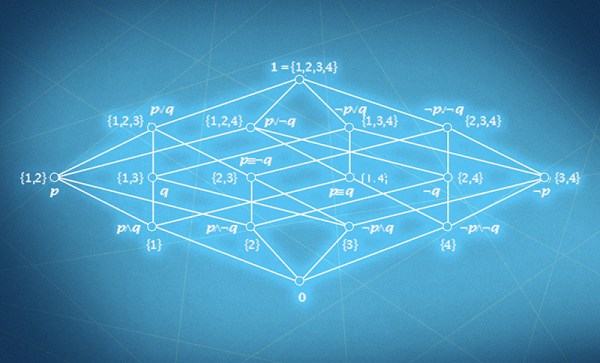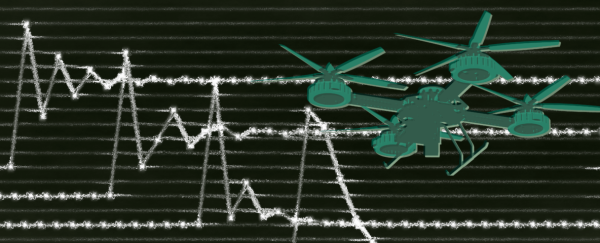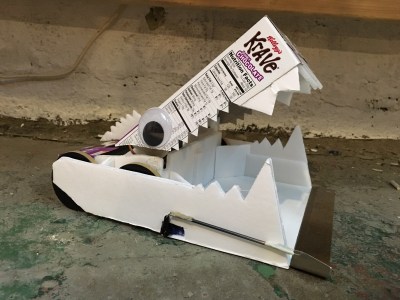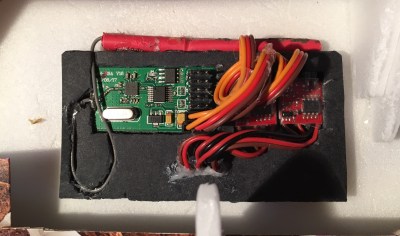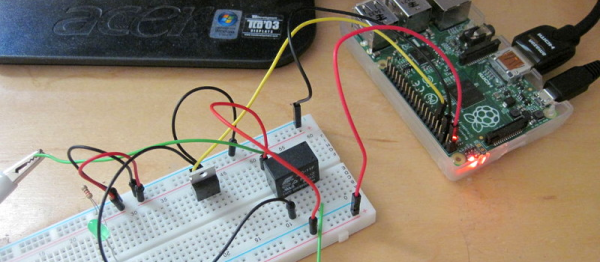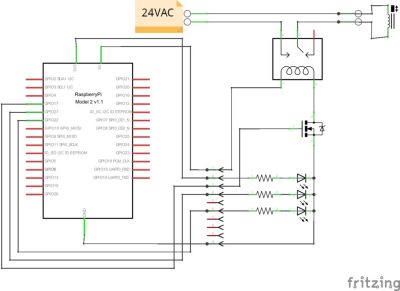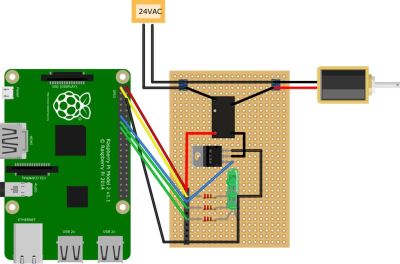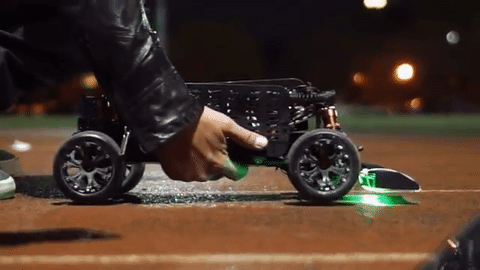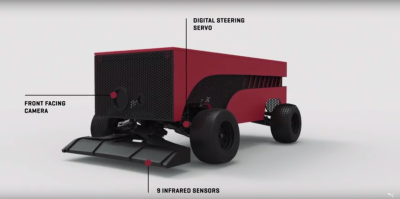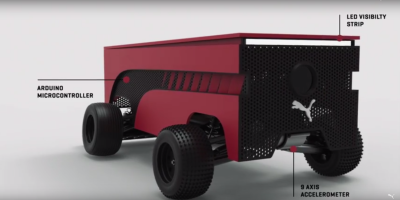We return once again to the work of Dr. Claude E. Shannon, this time to his Masters thesis on relay switching circuit design. This thesis introduced switching algebra that allows the systematic design and optimization of logical circuits. While Shannon’s work applied to switches and relays, it is equally applicable to all the modern forms of digital circuits. His thesis received widespread notice when published as “A Symbolic Analysis of Relay and Switching Circuits” in 1938. This work built on the Boolean algebra developed by George Boole and an analysis of logic by Augustus De Morgan which these mathematicians published nearly simultaneously in 1847. To some extent, it was the beginning of the age of modern digital logic. Continue reading “Designing Circuits With Switching Algebra”
Author: Rud Merriam85 Articles
Flying With Proportional – Integral – Derivative Control
Your quad-copter is hovering nicely 100 feet north of you, its camera pointed exactly on target. The hover is doing so well all the RC transmitter controls are in the neutral position. The wind picks up a bit and now the ‘copter is 110 feet north. You adjust its position with your control stick but as you do the wind dies and you overshoot the correction. Another gust pushed it away from target in more than one direction as frustration passes your lips: ARGGGHH!! You promise yourself to get a new flight computer with position hold capability.
How do multicopters with smart controllers hold their position? They use a technique called Proportional – Integral – Derivative (PID) control. It’s a concept found in control systems of just about everything imaginable. To use PID your copter needs sensors that measure the current position and movement.
The typical sensors used for position control are a GPS receiver and an Inertial Management Measurement Unit (IMU) made up of an accelerometer, a gyroscope, and possibly a magnetometer (compass). Altitude control would require a barometer or some other means of measuring height above ground. Using sensor fusion techniques to combine the raw data, a computer can determine the position, movement, and altitude of the multicopter. But calculating corrections that will be just right, without over or undershooting the goal, is where PID comes into play. Continue reading “Flying With Proportional – Integral – Derivative Control”
Using Missile Tech To See Like Predator
[Artem Litvinovich] wanted to see by heat vision like in the Predator movies. He not only succeeded but went on to see in color, medium-wave IR, short-wave IR, and ultraviolet using a very unique approach since his effort began back in 2009.
He started with a box based on the basic pinhole camera concept. In the box is a physical X-Y digitizer moving a photodiode to collect the thousands of points needed to create a picture. First all he got, due to the high signal amplification, was the 60 cycle hum that permeates our lives. A Faraday cage around the box helped but metal foil around the sensor and amplifier finally eliminated the noise. Now he had pictures in the near infrared (NIR). Continue reading “Using Missile Tech To See Like Predator”
Chomper Antweight Robot Kraves Combat
Antweight combat robots are really lightweight. [Carter Hurd] used leftover materials to create a dustpan robot with a chomper (comically made from a Krave cereal box) to hold captured competitors in place. The main body is made of foam board. The only metal is in the front wedge which is lifted by a servo to help trap the other robot.
[Carter] fully expects the foam to be eaten by competitors during the match. This led him to position his electronics at the center of the robot to keep it from being damaged. We’ll have to see how well that works. He’s hoping for an advantage over vertical flip weapons since they may simply cut through the foam without getting enough purchase for a flip.
The electronics is on a modular board so it can be easily moved from one robot to another. All that is on the board is the RC receiver and two FingerTech Tiny Electronic Speed Controllers. A battery is slung underneath.
Best of luck for Krave ‘bot eating up the opposition. We’ve seen some other light weight designs in the cardboard competitors from the Columbia Gadget Works makerspace.
K.I.S.S. Pi Sprinkler – Just Keep The Plants Alive
A good first step in a project is knowing what you want to do. [Ben Fino] made it clear that his Raspberry Pi Sprinkler control system for his wife’s garden had one goal: keep the plants alive. The resulting project is doing just that and no more.
The circuitry, and plumbing, is straightforward and explained well in the Instructable. All the electronics consists of is the Pi and a MOSFET to take the 3.3v GPIO to 5v to control a relay. The valve controlling the water requires 28v AC which necessitated the relay to control it. There are also three LEDs: one is for power, one to indicate when the valve is opened, and one is an extra for some future purpose.
The intriguing part is the use of weather data from the web to determine if it’s rained recently. Python scripts provided by [Ben’s] friend [Mark Veillette] use a weather site API to get the rainfall data. The main script is set to run once every 24 hours. [Ben] set his system to water unless the previous day had sufficient rain. How much rain and the number of look-back days is programmable.
What a great application of the KISS principle: keep it simple, stupid – except for that third LED without a purpose.
Software Update Destroys $286 Million Japanese Satellite
The Japanese X-ray telescope Hitomi has been declared lost after it disintegrated in orbit, torn apart when spinning out of control. The cause is still under investigation but early analysis points to bad data in a software package pushed shortly after an instrument probe was extended from the rear of the satellite. JAXA, the Japanese space agency, lost $286 million, three years of planned observations, and a possible additional 10 years of science research.
Hitomi, also known as ASTRO-H, successfully launched on February 17, 2016 but on March 26th catastrophe struck, leaving only pieces floating in space. JAXA, desperately worked to recover the satellite not knowing the extent of the failure. On April 28th they discontinued their efforts and are now working to determine the reasons for the failure, although a few weeks ago they did provide an analysis of the failure sequence at a press conference.
Continue reading “Software Update Destroys $286 Million Japanese Satellite”
Line Following Robot Trains Runners
Can your line following robot move faster than [Usain Bolt] who has been described as “The World’s Fastest Timed Human”? Puma, the athletic footwear, apparel and accessories company, created such a robot to help train their company sponsored athletes.
The shoebox-sized robot exceeds [Bolt]’s top speed of 44-km/hour. At that speed, following a line gets tricky. It took the development team 8 prototypes to attain that capability. Inside the BeatBot an Arduino reads 9 infrared sensors for line detection at 100 samples a second. A digital servo controls the Ackerman steering mechanism to follow the line on the track or floor. Wheel encoders provide the data for speed and distance measurement.
The user can set the distance of the run and the time to beat. Run pacing can also be adjusted. LEDs on the robot provide the starting ‘gun’ and help the runner see the BeatBot using peripheral vision. Two GoPro cameras, front and rear, provide a visual record of the run.
Puma believes that actually running against a competitor, even a robot, improves performance more than just running against the clock. They’re betting a grown-up line follower will help Olympic class athletes improve their performance. Continue reading “Line Following Robot Trains Runners”

